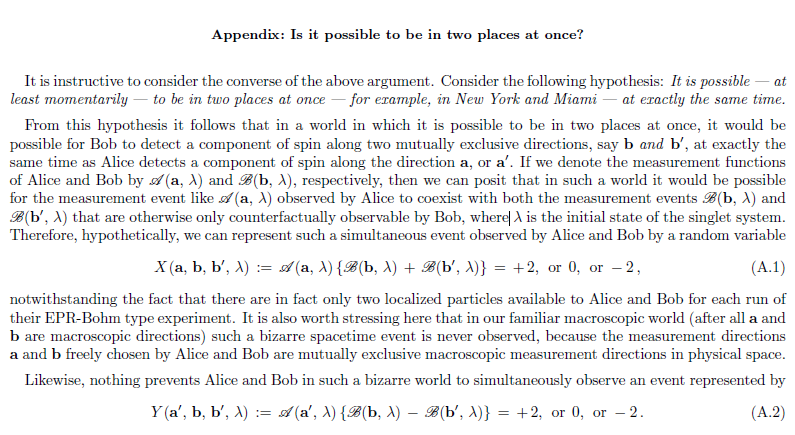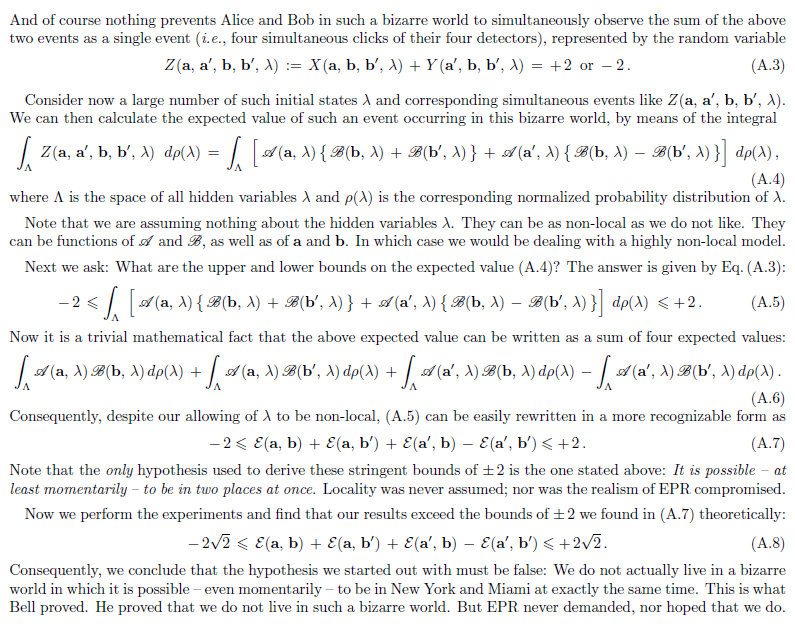thray wrote:
Michel, that is a beautifully compact way to explain the physical effect of parity on observation. I arrived at the same result in a draft paper ("Special Relativity and the Origin of Probability" https://www.researchgate.net/publicatio ... lity_REV_1)
Imagine a sequence of random results from a coin-tossing function: HHTHHHTTH ...
This sequence is identical to the maximally-unknowable Chaitin number Ω , in which the outcome H or T (0 or 1) of any individual toss cannot be predicted from the outcome previous, as if the discrete digits were independent Bernoulli trials. Ω is itself dependent on the initial condition of the program in which the algorithm was written, and no two different programming languages give the same result.
For a continuous function, however, only a pairwise state guarantees an unambiguous initial condition. (2 + x) + y and (2 + x) – y do not share a parity relation.
Arithmetic parity tells us:
{1/2} + 1/4 + {1/2} - 1/4 = 1 (+ -) anti-parity (a)
{1/2} - 1/4 + {1/2} + 1/4 = 1 (- +) anti-parity (b)
{1/2} + (+1/4) + {1/2} + (+1/4) = 1.5 (+ +) positive parity (H:) (c)
{1/2} – (-1/4) – {1/2} – (-1/4) = 0.5 (- -) negative parity (G:) (d)
The sign reversal between (c) and (d) informs the order of sign operations that plays a critical role in the inequalities of positive and negative pairwise parity.
The positive case is identical to the unfalsifiable twin primes conjecture; it will never tell us anything about what happens when we exchange positive parity for negative parity. G: is falsifiable in principle; H: is not falsifiable at all. Physically, the observer is always found in the impossible-to-observe state of highest energy (c), initially.
Tom
Hi Tom, that is a very interesting approach. Never thought of it that way. Will definitely check out your paper.
Have you ever considered if the no-cloning theorem of QM had a related origin?




